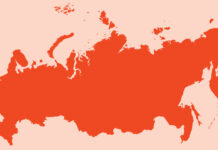Soon after Josef Stalin signed a mutual defense pact with Adolf Hitler, British Prime Minister Winston Churchill said that Russia was a mystery wrapped in an enigma. Russian military planners were undoubtedly pleased by what they might have taken as praise. One of the foundations of their military doctrine is the principle of maskirovka, or the use of various deceptions and denials to mask their true intentions. Maskirovka doesn’t always work, but when it does, it can utterly transform a battle, even a war.
Trusting in the common perception of the state of the Russian military can be designed to be fatal. I have long wondered about the chaotic structure of Russian forces in Ukraine and about the amount of time and resources Russia devotes to secondary targets. It’s tempting to assume that Moscow is foundering or that it was fated to defeat, but the fact that maskirovka is embedded so deeply in the Russian military psyche makes it necessary to periodically rethink Russian plans and resources. These things are unknown by design, but what if it turns out that the Russian bungling is a ploy, its real force and intention hidden, waiting to strike? When thinking about the Russians, creating a model diametrically opposed to what you believe, and then taking it apart, is essential.
The current consensus is that Russia has lost the organization, resources or trained manpower necessary to do more than hold its ground or perhaps advance with very limited objectives. This view is based on command confusion in which the Russian armed forces are competing with the Wagner Group, rather than commanding it. It would explain the extended battle in Bakhmut – to say nothing of Russia’s general inability to cripple Ukrainian forces and penetrate deeper into Ukraine. Penetration and destruction are the essence of warfare. A divided chain of command could explain the failure, and the inability to repair it could easily lead an enemy to assume that a Russian victory is all but impossible.
Let’s assume for the sake of argument that Russia built the battle of Bakhmut to draw the Ukrainians forward into a more vulnerable position. A smashing defeat of Ukraine there would create a massive crisis in the Ukrainian command and stoke serious tensions with allies. If the disparity of force were sufficient, Russian forces might move decisively to Ukraine’s western border. The purpose of the battle, then, would be to convince Ukraine to carry out a broad attack in the hope of breaking Russia’s will. For Russia, the true goal would not be to end the battle quickly but to significantly weaken Ukraine’s defense of the heartland and to encourage forces planned for the offensive to form into large units. The next step would be massive airstrikes on the concentrations using drones. The key would be the generation of military targets for air attack, followed by a massive, decisive infantry attack into the heartland (the type Russia should have opened with).
To be sure, this scenario is difficult to take seriously. Even if it were all going according to script, the strategy would be compromised by the inability to field large numbers of trained fighters, to protect the transportation of rapid, surprise deployment, and to hide the concentration of forces from Western intelligence. (Doing so is difficult but not impossible. The U.S. and British succeeded at Normandy, and the Germans at the Ardennes, though detection capabilities in World War II were obviously more limited than they are now.)
The critical issue here is the timing of detection relative to the ability of Ukrainian forces to form an attack and disrupt Russian forces. Russian air defense would have to be limited to avoid hinting at a large concentration of other forces. And the infantry would have to move into Ukraine in battle-ready form. The process of moving forward and creating a unified force under coherent Russian command represents the key and most unlikely phase of the operation.
The complexity of the project at all levels convinces me that the Russian command is simply dysfunctional and highly vulnerable to Ukrainian action. If there’s a maskirovka ploy afoot it must have been executed by now. But there is no hint of it. It’s hard to see anything but weakness in the Russian force at the moment.







